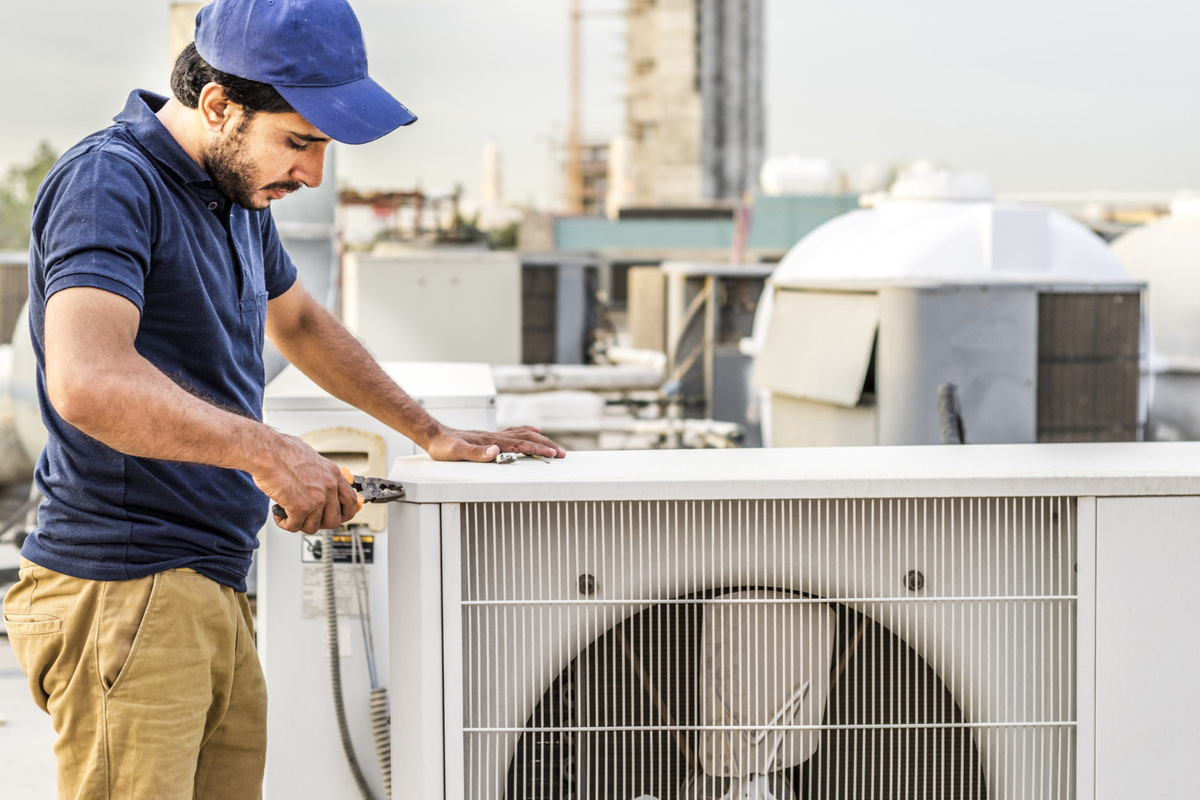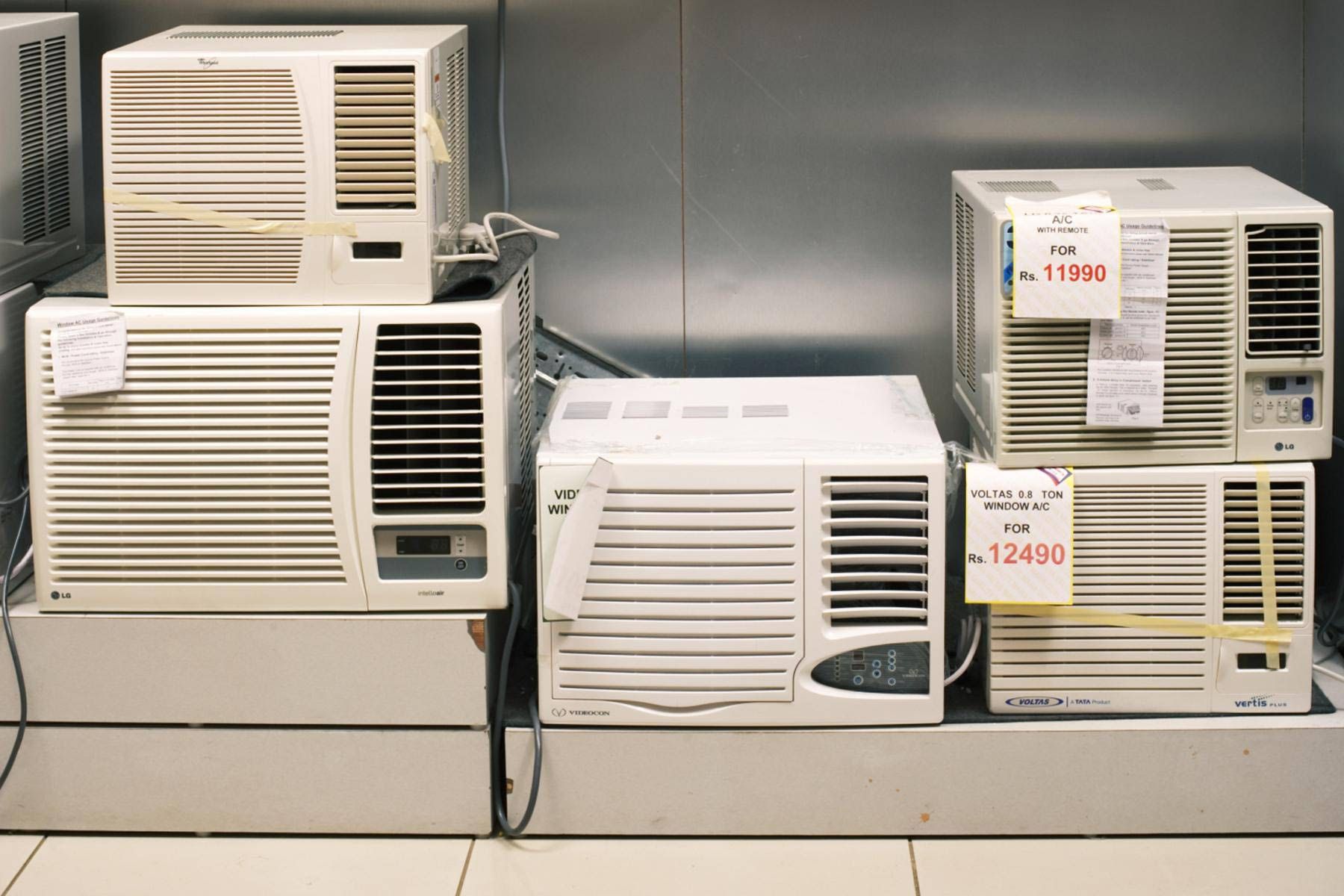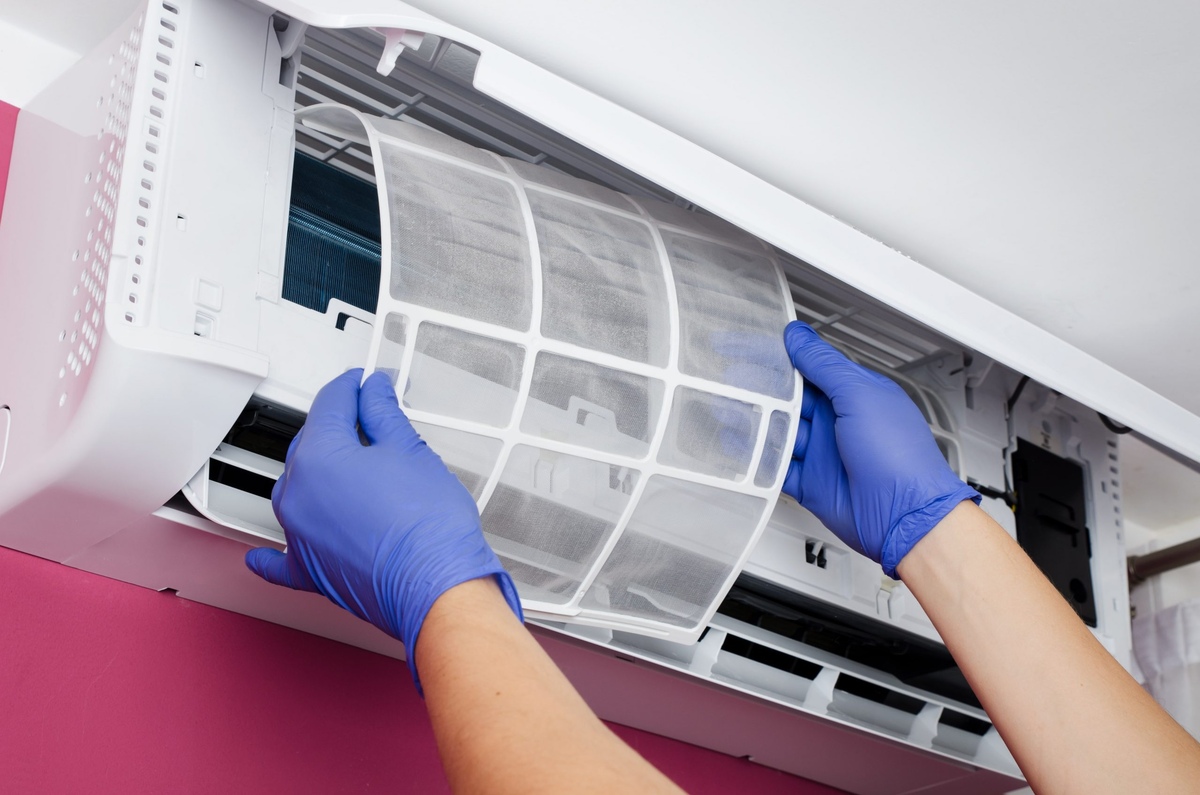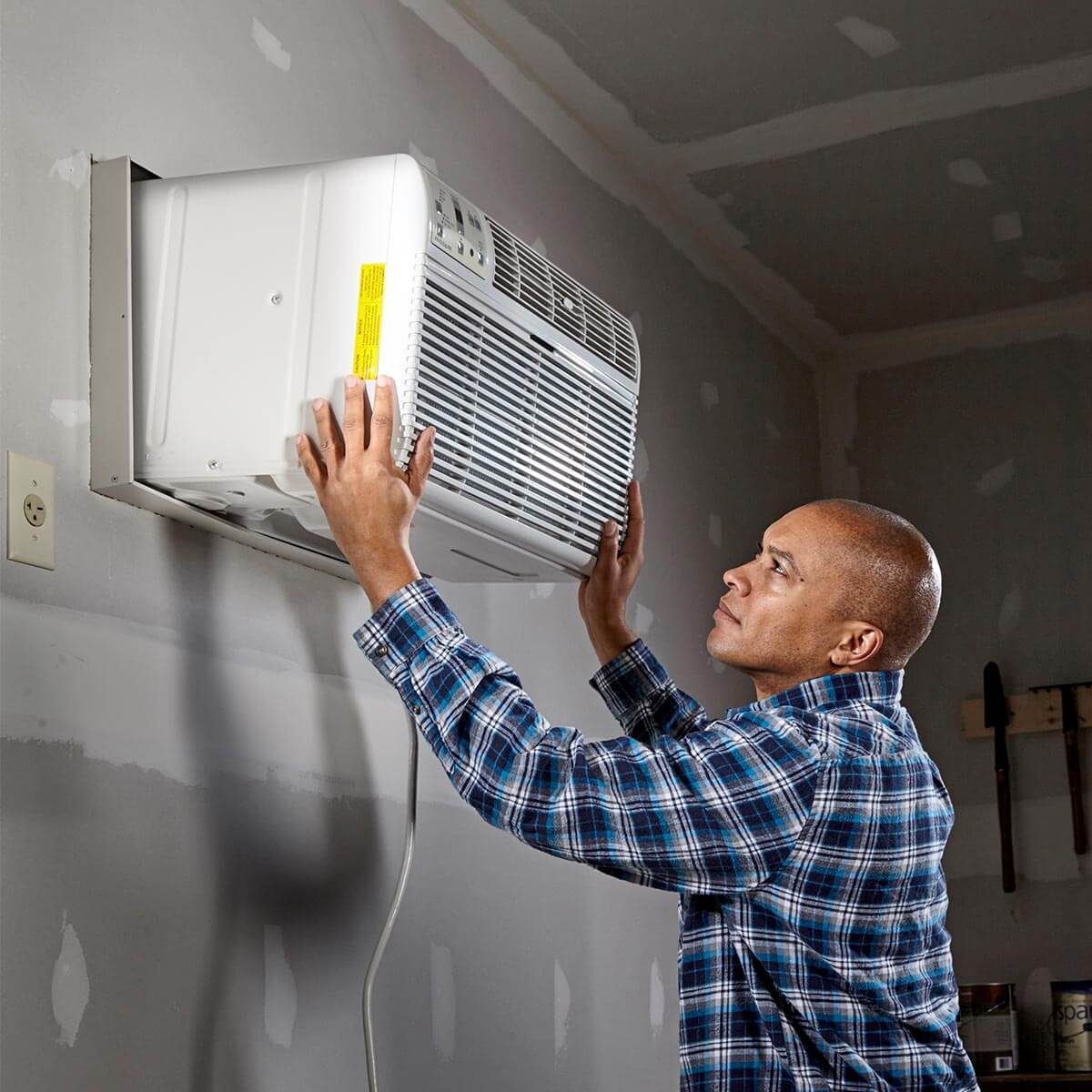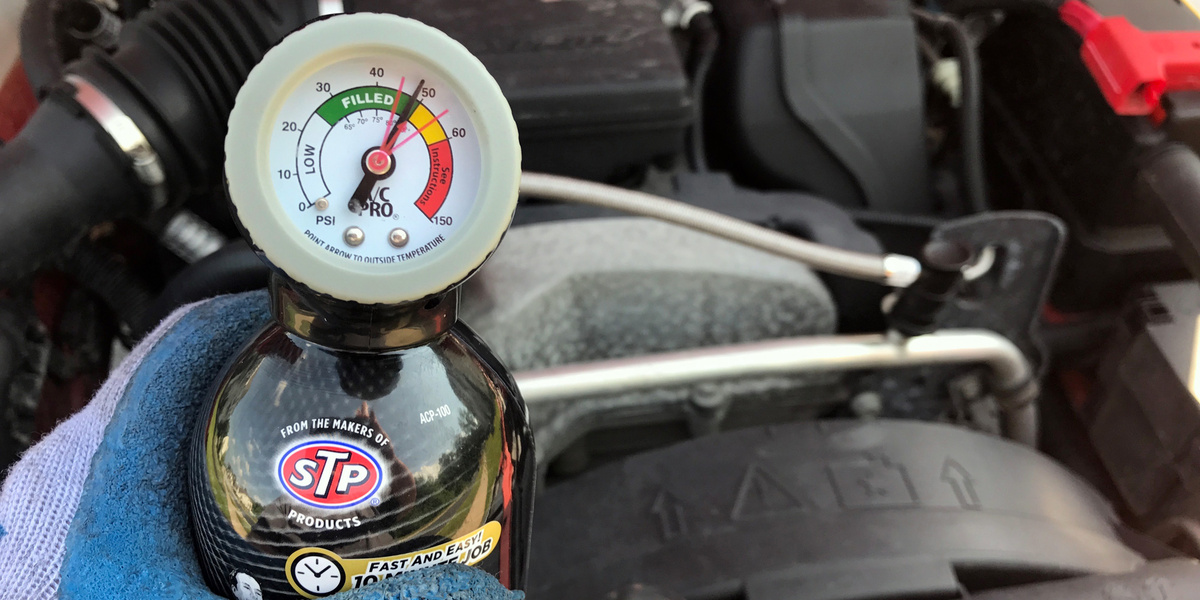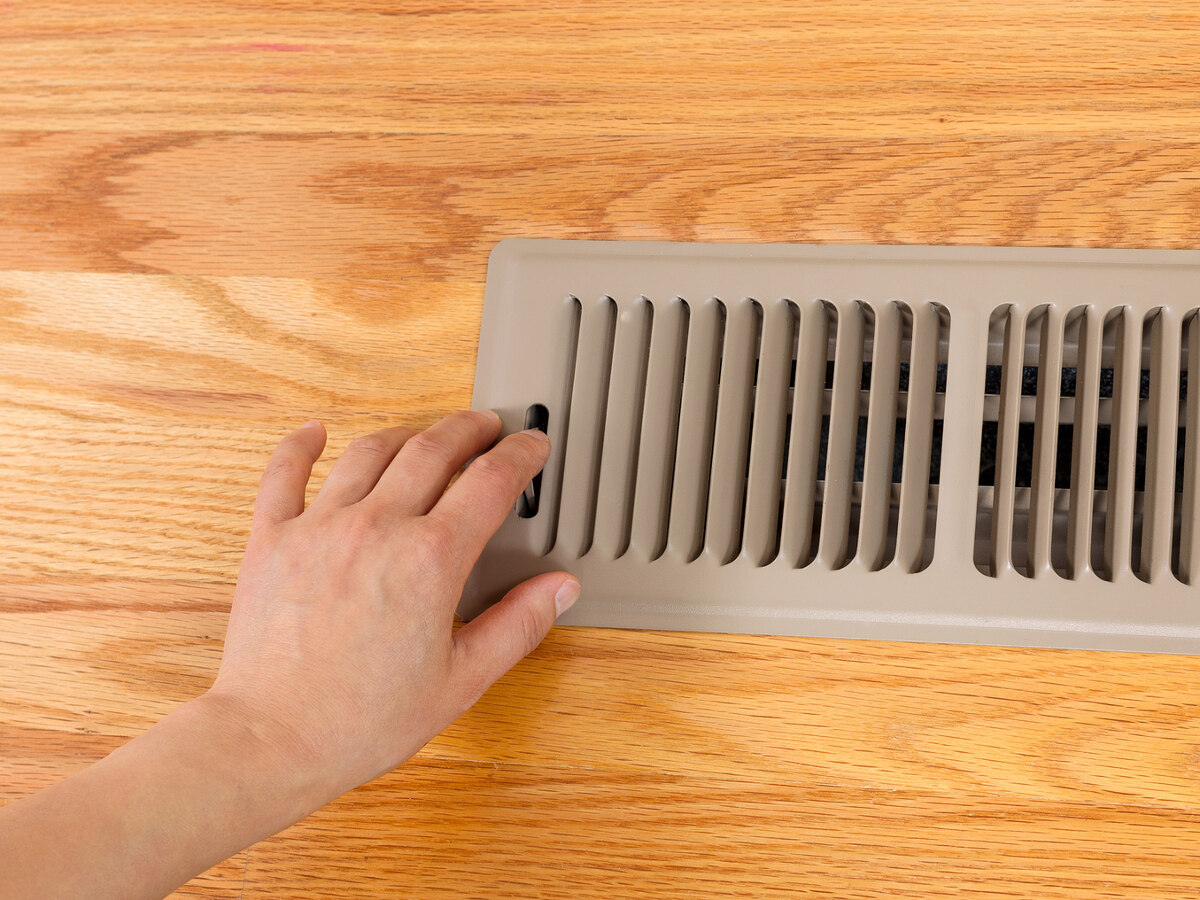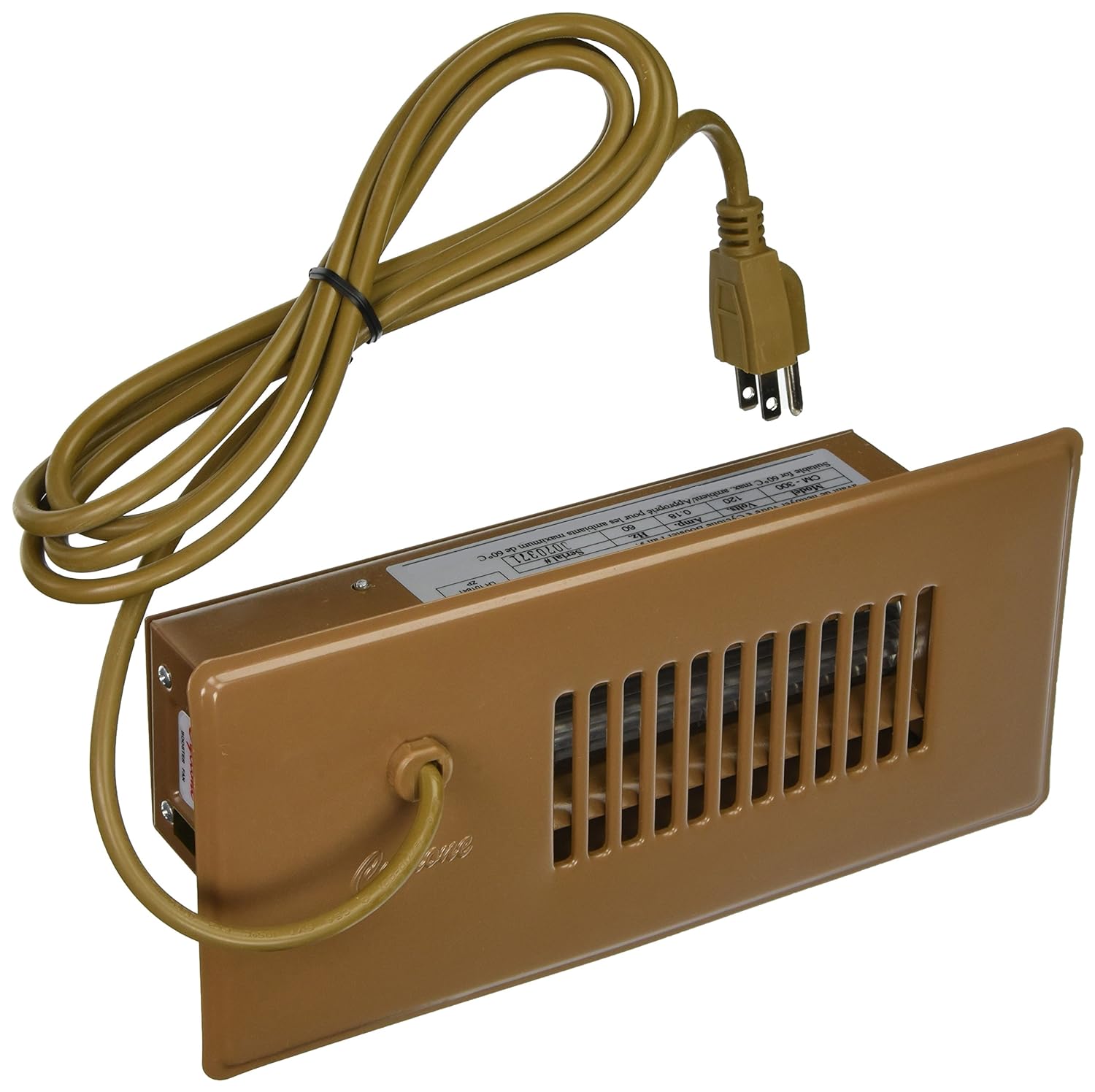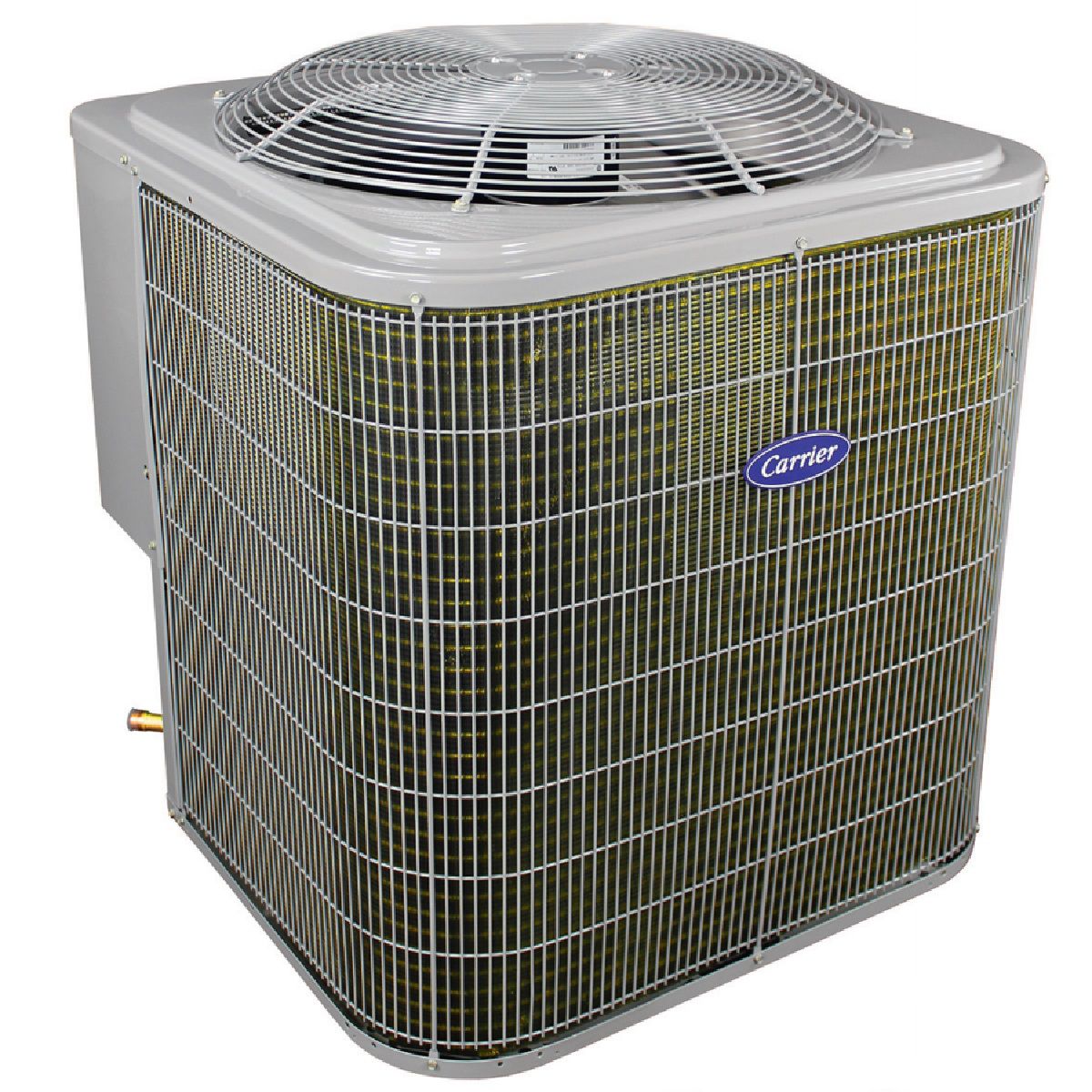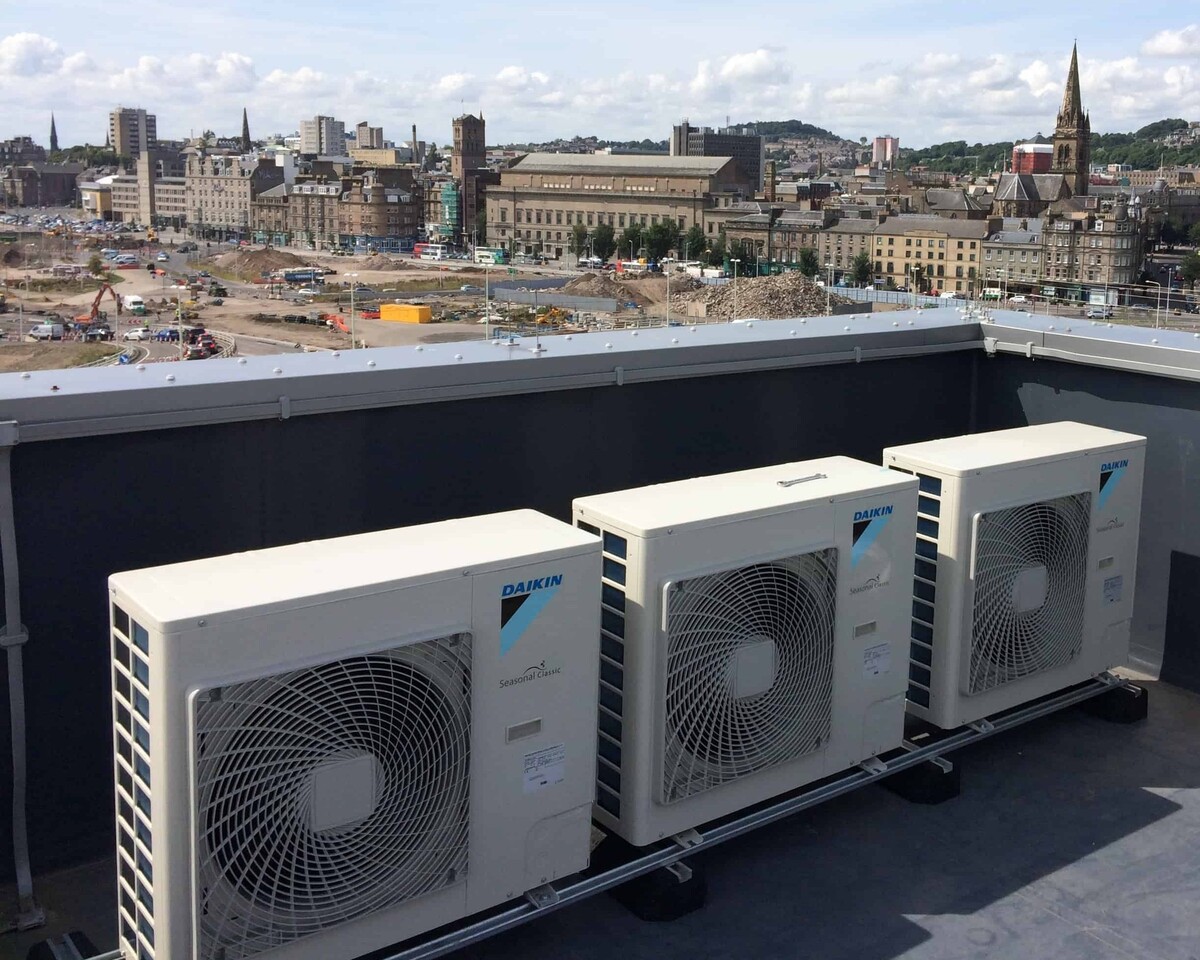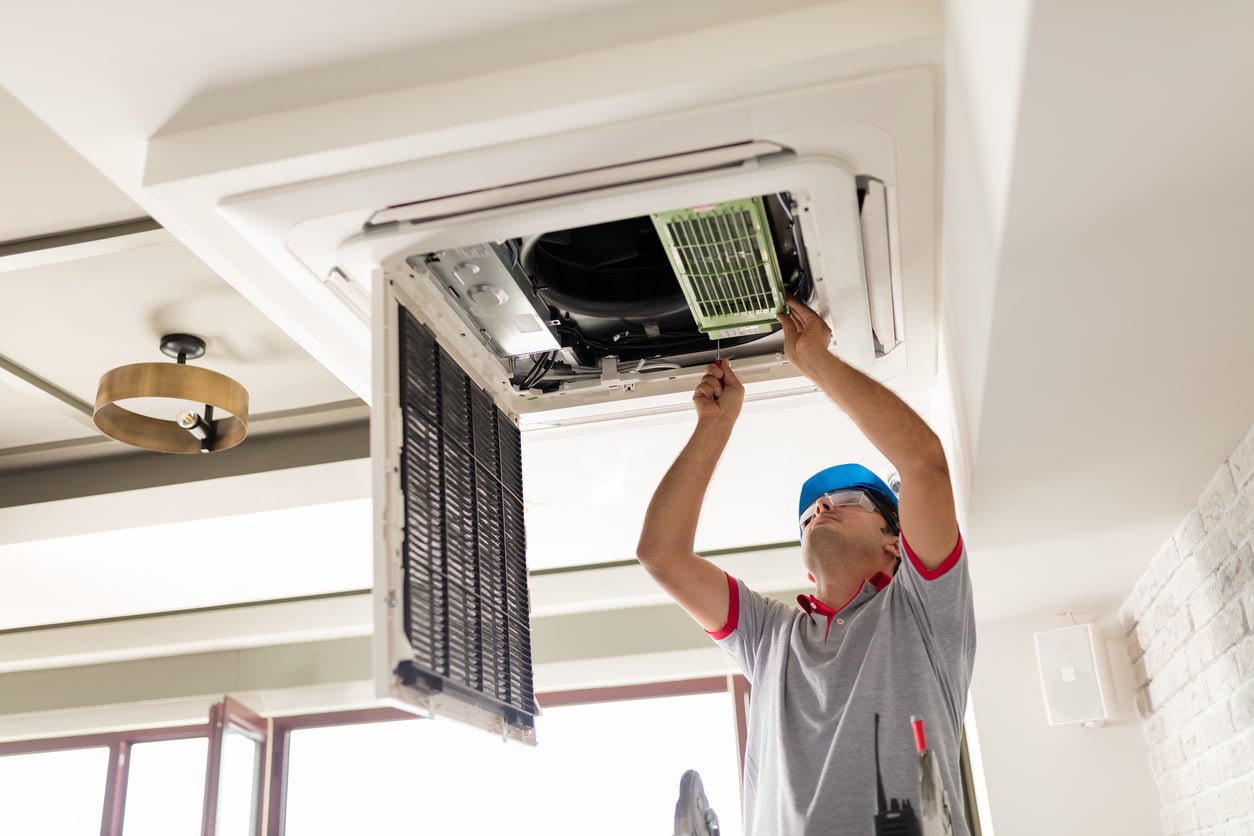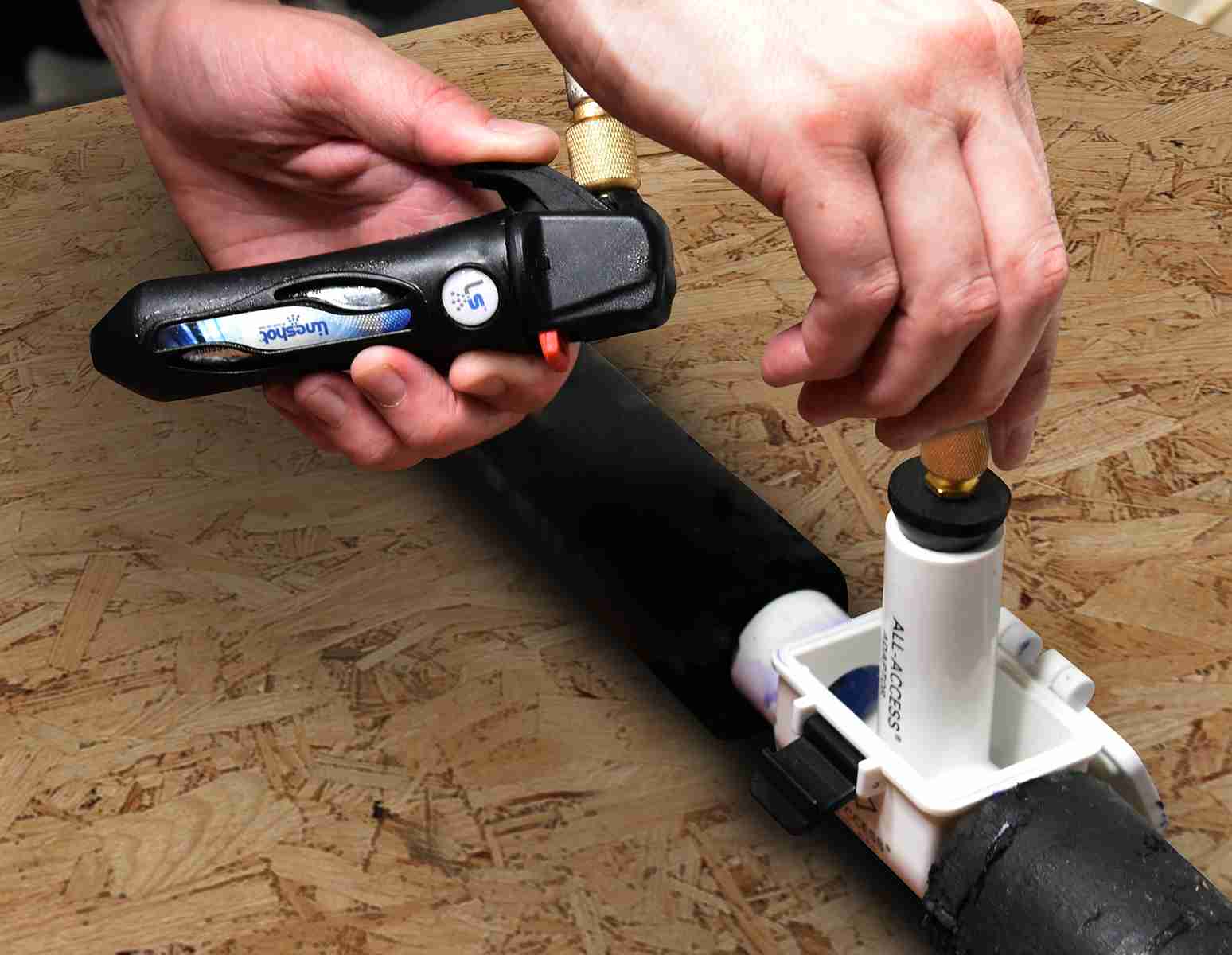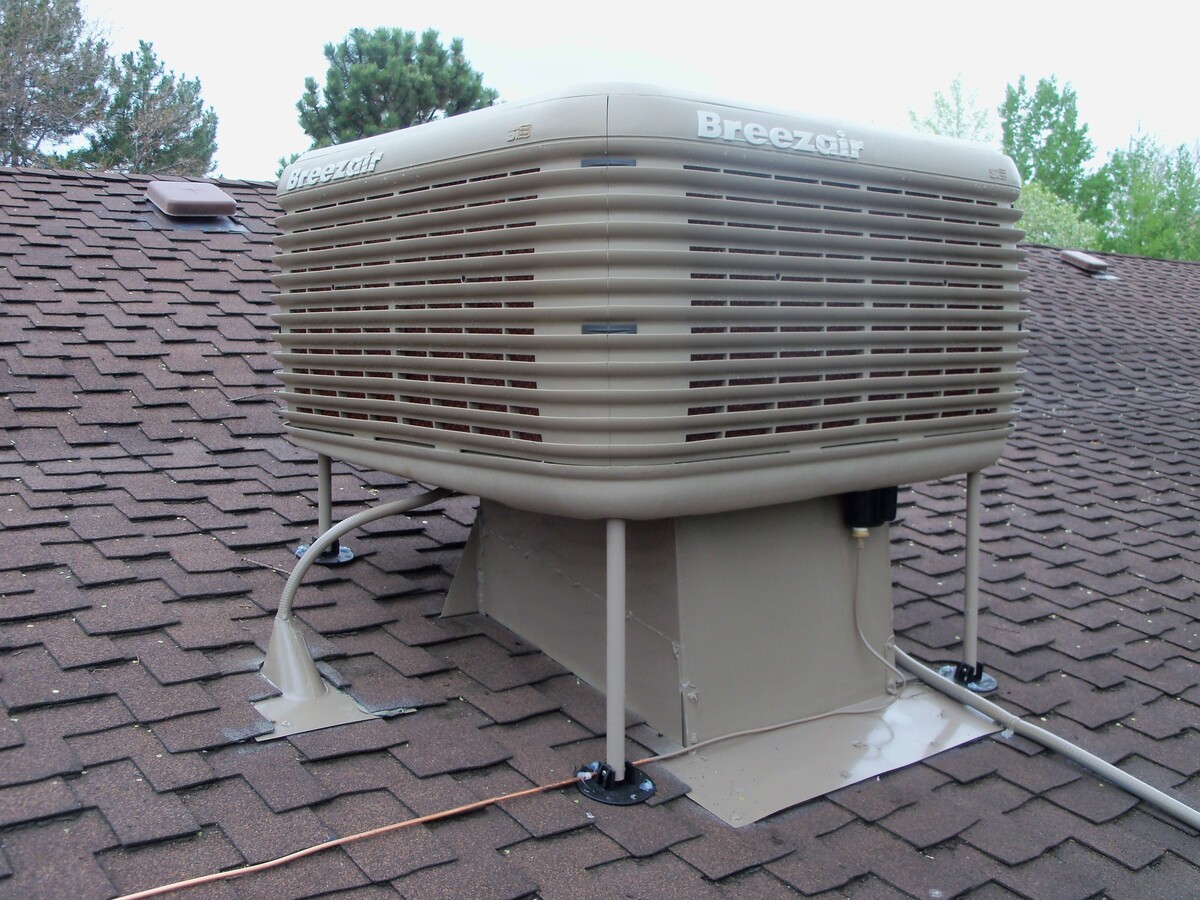Home>Home Maintenance>How To Defrost An Air Conditioning Unit
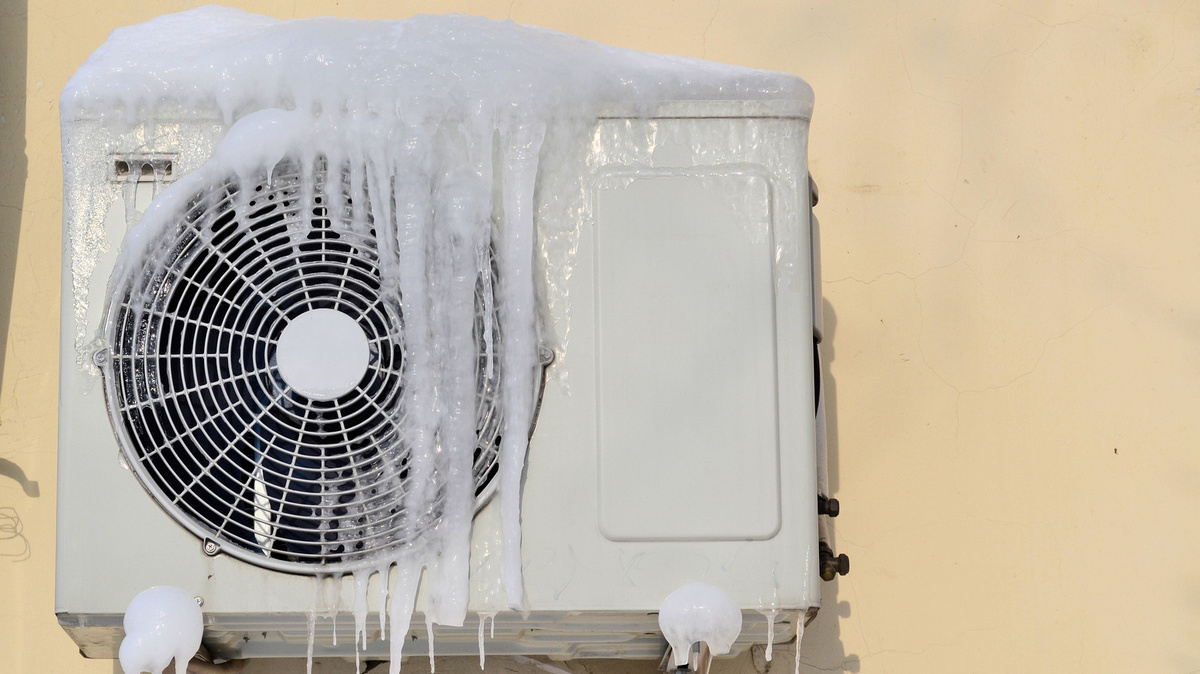

Home Maintenance
How To Defrost An Air Conditioning Unit
Modified: March 21, 2024
Learn the easy steps to safely defrost your air conditioning unit at home with this helpful guide on home maintenance.
(Many of the links in this article redirect to a specific reviewed product. Your purchase of these products through affiliate links helps to generate commission for Storables.com, at no extra cost. Learn more)
Introduction
Welcome to the comprehensive guide on how to defrost an air conditioning unit. If you’ve ever experienced your AC not cooling your space effectively, you might be dealing with a common issue – frost build-up. Frost build-up can restrict the airflow and reduce the efficiency of your air conditioning unit. This guide will walk you through the steps to safely and effectively defrost your AC unit, ensuring it works at optimal performance.
Understanding the process of defrosting an air conditioning unit is essential for homeowners, as it can help you troubleshoot issues and potentially save you from costly repairs or replacement of the unit. By learning how to defrost your AC, you will have the knowledge and skills to address any frost-related problems efficiently.
It’s important to note that frost build-up typically occurs when the evaporator coil in your air conditioning unit becomes too cold. This can happen due to factors such as low refrigerant levels, restricted airflow, or a malfunctioning defrost sensor. When the cold air passes over the evaporator coil, condensation forms, and if the coil is too cold, that condensation freezes, resulting in frost.
This guide will not only teach you how to defrost an air conditioning unit, but it will also help you understand the signs of frost build-up, the necessary preparations for defrosting, and preventive measures to avoid future frost-related issues. So let’s dive in and learn how to defrost your air conditioning unit.
Key Takeaways:
- Defrosting your air conditioning unit is essential to maintain its cooling efficiency and prevent potential damage. Regular maintenance, including cleaning air filters and monitoring humidity levels, can help avoid frost build-up and ensure optimal performance.
- Proper preparation, systematic defrosting steps, and preventive measures such as regular professional maintenance and insulating exposed ductwork are crucial in preventing frost build-up in your air conditioning unit. Taking proactive measures can prolong the life of your AC unit and ensure comfortable indoor spaces.
Read more: How To Defrost Windshield With AC
Understanding the Need to Defrost an Air Conditioning Unit
Frost build-up in an air conditioning unit can lead to various problems, affecting its performance and energy efficiency. It is important to understand why defrosting is necessary to ensure optimal functioning of your AC unit.
When frost accumulates on the evaporator coil, it acts as an insulator, preventing proper heat transfer. As a result, your air conditioner will struggle to cool the air effectively, leading to reduced cooling capacity and potentially causing discomfort in your living space.
Moreover, the restricted airflow caused by frost build-up can put additional strain on the compressor, resulting in increased energy consumption and higher utility bills. Additionally, a heavily frosted coil can potentially lead to an overheated compressor, which can cause serious damage to the unit and require costly repairs or replacement.
Ignoring frost build-up can lead to further issues. For instance, if the frost on the coil continues to accumulate, it can eventually cause the coil to freeze completely. This can result in a complete breakdown of your air conditioning unit and the need for professional intervention. Regularly defrosting your AC unit can help you avoid these troubles and ensure efficient cooling and longevity of your equipment.
Not only does defrosting your air conditioning unit improve its performance, but it also enhances the overall indoor air quality. The moisture that accumulates on the coil can foster the growth of mold and bacteria, which can pose health risks to you and your family. By defrosting the unit, you eliminate the excess moisture and prevent the growth of these harmful contaminants.
Now that you understand the importance of defrosting your air conditioning unit, we can move on to the next section, which will help you identify the signs of frost build-up and determine if your unit requires defrosting.
Signs of Frost Build-up in an Air Conditioning Unit
Identifying the signs of frost build-up in your air conditioning unit is crucial to address the issue promptly and avoid further damage. Here are some common signs that indicate your AC unit has accumulated frost:
- Reduced Cooling Efficiency: If you notice that your air conditioner is not cooling your space as effectively as before, it could be due to frost build-up. Frost acts as an insulator, impeding the proper transfer of heat and reducing the cooling capacity of the unit.
- Warm Air Flow: Frost build-up restricts the airflow through the evaporator coil. As a result, you may experience warm or lukewarm air coming from the vents instead of the cool air you expect from your AC unit.
- Visible Frost or Ice: In some cases, you may be able to visually see frost or ice on the evaporator coil. If you can access the unit, take a look inside and check for any frost or ice formation on the coil or other components.
- Water Leaks: Frost build-up can lead to excessive condensation, causing water to drip or leak from the air conditioning unit. If you notice water pooling around the unit or water dripping from the vents, it could be a sign of frost-related issues.
- Unusual Sounds: Frost build-up can cause the fan blades to come into contact with the accumulated ice, resulting in unusual noises. If you hear any banging, scraping, or grinding sounds coming from your AC unit, it could indicate frost-related issues.
- High Energy Consumption: If your air conditioning unit is working harder to overcome the insulating effect of frost build-up, it will consume more energy to achieve the desired cooling. An unexpected increase in your energy bills could be a sign that your AC unit is struggling with frost accumulation.
If you notice any of these signs in your air conditioning unit, it is crucial to take immediate action. Ignoring frost build-up can lead to further damage, reduced cooling efficiency, and potential breakdown of the unit. In the next section, we will discuss the necessary steps you need to take before defrosting your AC unit to ensure a safe and effective process.
Preparation for the Defrosting Process
Before you begin the defrosting process for your air conditioning unit, it’s important to prepare yourself and gather the necessary tools and materials. Adequate preparation will ensure a smooth and efficient defrosting process. Here are the essential steps to follow:
- Gather the Required Tools: To defrost your AC unit, you will need a few basic tools such as a screwdriver, a soft brush or cloth, a spray bottle filled with warm water, and a towel or bucket to catch the water as it melts.
- Turn off the Power: Safety should be your top priority when working with electrical appliances. Start by switching off the power supply to your air conditioning unit. Locate the electrical disconnect switch or the circuit breaker that controls the AC unit and turn it off.
- Access the Evaporator Coil: Depending on the design of your air conditioning unit, you may need to remove a cover or access panel to reach the evaporator coil. Refer to the manufacturer’s manual or consult with a professional if you are unsure about the process.
- Protect the Area: Defrosting can be a messy process, so it’s essential to protect the area around the unit. Lay down a protective sheet or place towels or buckets to catch any water runoff as the ice melts.
- Allow the Unit to Thaw: Once you have accessed the evaporator coil, it’s time to let the unit thaw naturally. Avoid using any sharp objects or excessive force to remove the ice as it can damage the delicate components of the air conditioner. Allow the ice to melt completely before moving on to the next steps.
- Clean the Evaporator Coil: Once the ice has melted, it’s crucial to clean the evaporator coil to remove any debris or residue. Use a soft brush or cloth to gently wipe away any dirt or dust that might have accumulated on the coil surface. You can also use a mild detergent mixed with warm water to clean stubborn stains, but make sure to rinse it thoroughly afterward.
- Inspect for Any Damage: While you’re cleaning the evaporator coil, take the opportunity to inspect the other components of the air conditioning unit for any signs of damage, corrosion, or wear. If you notice any issues, consult with a professional to address them before restarting the unit.
By following these preparation steps, you will ensure a safe and effective defrosting process for your air conditioning unit. Once you have prepared the necessary tools and materials and allowed the ice to thaw naturally, you’re ready to move on to the actual steps for defrosting your AC unit, which we will cover in the next section.
To defrost an air conditioning unit, turn off the unit and let the ice melt naturally. You can also use a hairdryer on a low setting to speed up the process, but be careful not to damage the unit.
Steps to Defrost an Air Conditioning Unit
Defrosting an air conditioning unit requires a systematic approach to ensure that the process is done correctly. By following these step-by-step instructions, you can effectively defrost your AC unit and restore its performance:
- Turn off the Power: Before you begin the defrosting process, make sure to switch off the power supply to your air conditioning unit. This will prevent any accidental electrical issues during the process.
- Allow the Ice to Melt: Once the power is turned off, you need to allow the ice on the evaporator coil to melt completely. This may take several hours, depending on the extent of the frost buildup.
- Collect the Water Runoff: As the ice melts, it will turn into water. Place a towel or a bucket underneath the unit to collect the water runoff to prevent it from damaging your flooring or belongings.
- Clean the Drip Pan: While the ice is melting, take the opportunity to clean the drip pan located underneath the evaporator coil. Empty and wash the drip pan to remove any accumulated dirt or debris. This will help prevent future blockages and drainage issues.
- Inspect and Clean the Drainpipe: The drainpipe is responsible for carrying condensation away from the air conditioning unit. Inspect the drainpipe to ensure it is free from blockages or clogs. If necessary, use a wire brush or a pipe cleaner to remove any debris.
- Adjust Air Filters: Depending on the condition of the air filters, you may need to replace or clean them. Dirty air filters restrict airflow and can contribute to frost build-up. Clean or replace the filters as needed to maintain proper airflow and prevent future frost issues.
- Reassemble and Turn on the Power: Once the ice has melted, the drip pan and drainpipe have been cleaned, and the filters have been adjusted, it’s time to reassemble the air conditioning unit. Turn on the power supply and set the thermostat to the desired cooling temperature.
- Monitor for Proper Cooling: After the unit has been reassembled and powered on, monitor it to ensure that it is cooling effectively. Check the airflow from the vents and listen for any unusual noises. If you notice any issues or the cooling is not as efficient as expected, consult with a professional for further inspection.
By following these systematic steps, you can defrost your air conditioning unit and restore its functionality. However, it’s important to note that if you are unsure or uncomfortable performing these steps yourself, it is always recommended to seek assistance from a professional HVAC technician who specializes in air conditioning repair and maintenance.
In the next section, we will provide additional tips to help you successfully defrost your air conditioning unit and prevent future frost build-up.
Read more: How Is Air Conditioning Powered
Additional Tips for Defrosting an Air Conditioning Unit
In addition to the step-by-step process of defrosting your air conditioning unit, here are some additional tips that can help ensure a successful defrosting process and prevent future frost build-up:
- Regularly Inspect and Clean the Air Filters: Clogged or dirty air filters restrict airflow and can contribute to frost build-up. Make it a habit to inspect and clean or replace the air filters every one to three months, depending on the manufacturer’s recommendation.
- Check the Thermostat Settings: Ensure that the thermostat is set to the proper cooling temperature. If the temperature is set too low, it can cause excessive cooling and frost build-up. Keep the thermostat at a comfortable setting that avoids overcooling.
- Maintain Proper Airflow: Ensure that there are no obstructions blocking the airflow to and from the air conditioning unit. Keep the area around the unit clean and clear of any debris, furniture, or other objects that may obstruct the airflow and inhibit proper heat transfer.
- Monitor Humidity Levels: High humidity levels in your indoor environment can contribute to frost build-up. Use a dehumidifier to reduce excessive humidity and create a more comfortable and frost-resistant environment.
- Schedule Regular Professional Maintenance: It’s recommended to have your air conditioning unit serviced by a professional HVAC technician at least once a year. They can inspect, clean, and tune-up your unit, ensuring optimal performance and identifying any potential issues before they escalate.
- Consider Upgrading to a Programmable Thermostat: A programmable thermostat allows you to set temperature schedules, ensuring that your AC unit operates efficiently without excessive cooling or frost accumulation. It can also help save energy and reduce your utility bills.
- Keep the Coils Clean: Regularly clean the condenser coils located outside of your air conditioning unit. Dust, debris, and vegetation can accumulate on the coils, hindering heat exchange and potentially causing frost build-up. Use a soft brush or cloth to gently clean the coils.
- Monitor for Warning Signs: After defrosting your air conditioning unit, keep an eye out for any warning signs of frost build-up. If you notice reduced cooling efficiency, water leaks, or unusual sounds, it may indicate a recurring issue that needs professional attention.
By following these additional tips, you can not only defrost your air conditioning unit effectively but also maintain its performance and prevent future frost-related problems.
Taking proactive measures and addressing any frost build-up promptly will help prolong the life of your AC unit and ensure optimal cooling efficiency. Remember, if you encounter any difficulties or are uncertain about the defrosting process, it is always advisable to seek the assistance of a professional HVAC technician.
In the concluding section, we will discuss preventive measures that can help you avoid future frost build-up in your air conditioning unit.
Preventive Measures to Avoid Frost Build-up in the Future
To minimize the occurrence of frost build-up in your air conditioning unit and maintain its efficiency, it’s essential to take preventive measures. By implementing the following practices, you can avoid future frost-related issues:
- Maintain Regular Air Filter Cleaning: Clean or replace the air filters every one to three months to ensure proper airflow. Clogged filters restrict the air passage, leading to reduced cooling efficiency and potential frost build-up.
- Ensure Unobstructed Airflow: Keep the area around the air conditioning unit clear of any furniture, curtains, or objects that can obstruct the airflow. Obstructions can restrict the exchange of heat and contribute to frost accumulation.
- Monitor and Control Humidity Levels: Excessive humidity can contribute to frost build-up. Use a dehumidifier to maintain a comfortable and moisture-free indoor environment.
- Perform Regular Maintenance: Schedule annual maintenance with a professional HVAC technician to inspect, clean, and tune-up your air conditioning unit. They can identify and address any potential issues before they worsen and cause frost-related problems.
- Clean Condenser Coils Regularly: The condenser coils located outside the unit can collect dust and debris, hindering heat exchange. Regularly clean the coils using a soft brush or cloth to maintain proper cooling efficiency.
- Invest in Regular Inspections: Consider hiring a professional HVAC technician to conduct regular inspections of your air conditioning unit. They can identify any underlying issues, such as low refrigerant levels or a malfunctioning defrost sensor, which can lead to frost accumulation.
- Upgrade to a Programmable Thermostat: Programmable thermostats allow you to set temperature schedules and avoid overcooling. By managing the cooling cycles effectively, you can prevent excessive cooling and the subsequent frost build-up.
- Ensure Proper Refrigerant Levels: Low refrigerant levels can cause the evaporator coil to become too cold, leading to frost accumulation. Regularly check the refrigerant levels and consult with a professional if a recharge or repair is needed.
- Insulate Exposed Ductwork: Properly insulating any exposed ductwork can help maintain the desired temperature and prevent condensation or frost issues. Insulation ensures that cool air reaches its intended destination without significant loss or temperature fluctuations.
- Keep the Area Clean: Regularly clean the area surrounding your air conditioning unit, including the outdoor unit and the indoor components. Remove any debris, leaves, or other obstructions that can impede airflow and cause frost build-up.
By implementing these preventive measures, you can significantly reduce the chances of frost build-up in your air conditioning unit. Regular maintenance, proper airflow management, and attention to humidity levels will not only enhance the longevity of your AC unit but also help optimize its energy efficiency and cooling performance.
Remember, if you notice persistent frost build-up or encounter any issues with your air conditioning unit, it’s always recommended to seek professional assistance. HVAC experts can diagnose and address the root cause of the problem, ensuring that your AC unit operates smoothly and efficiently.
By following these preventive measures and taking proactive steps, you can enjoy cool and comfortable indoor spaces without the worry of frost-related complications.
Conclusion
Defrosting an air conditioning unit is a crucial maintenance task that can optimize its performance and prevent potential damage. By understanding the need to defrost, recognizing the signs of frost build-up, and following the proper steps, you can effectively defrost your AC unit and restore its cooling efficiency.
Regularly inspecting and cleaning the air filters, maintaining proper airflow, monitoring humidity levels, and scheduling professional maintenance are key preventive measures to avoid future frost build-up. By implementing these practices, you can prolong the life of your air conditioning unit and ensure its optimal functioning.
Remember to regularly clean the condenser coils and insulate exposed ductwork, as well as check and adjust the thermostat settings to avoid overcooling. Investing in programmable thermostats and monitoring refrigerant levels also play a crucial role in preventing frost-related issues.
If you encounter any difficulties or are uncertain about the defrosting process, it is strongly recommended to seek the assistance of a professional HVAC technician. They have the expertise to handle the defrosting process efficiently and address any underlying issues.
Taking proactive measures, conducting regular maintenance, and addressing any signs of frost build-up promptly will help ensure that your air conditioning unit operates smoothly and efficiently, providing you with cool and comfortable indoor spaces.
By following the guidelines provided in this comprehensive guide, you now have the knowledge and skills to defrost your air conditioning unit with confidence. Keep your AC unit frost-free, and enjoy the benefits of a well-maintained and efficiently functioning cooling system.
Frequently Asked Questions about How To Defrost An Air Conditioning Unit
Was this page helpful?
At Storables.com, we guarantee accurate and reliable information. Our content, validated by Expert Board Contributors, is crafted following stringent Editorial Policies. We're committed to providing you with well-researched, expert-backed insights for all your informational needs.

